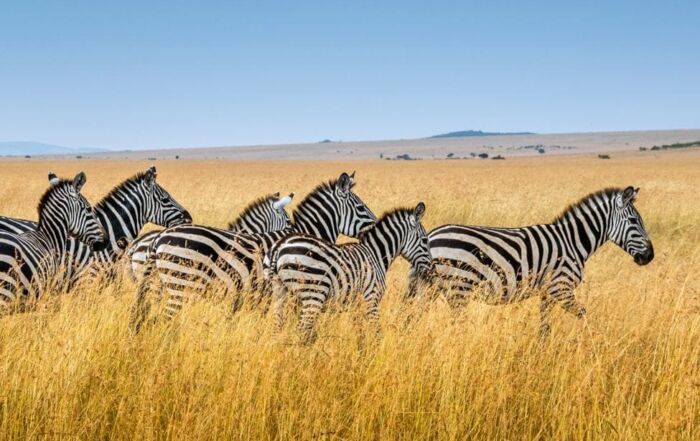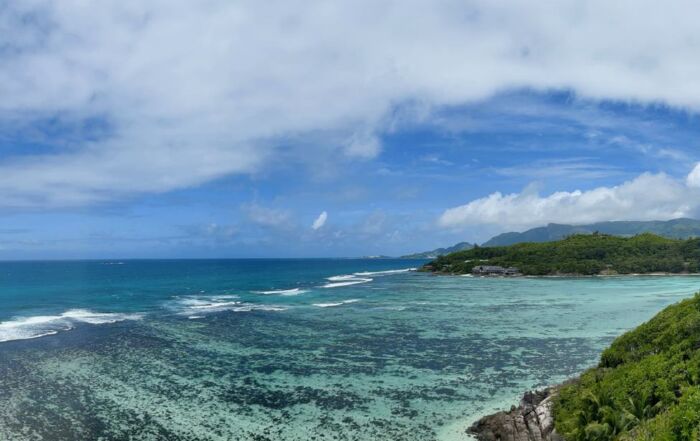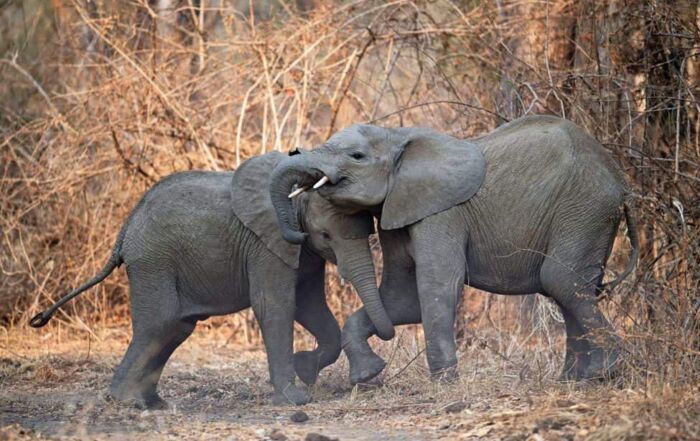Lake Manyara: A Little Park with Lots to Offer
Lake Manyara National Park is one of Tanzania’s smaller parks, but it is breathtaking in its biodiversity. Located in north-central Tanzania, Lake Manyara National Park offers phenomenal views of both landscapes and wildlife.
Set between Lake Manyara and the edge of the Great Rift Valley, Lake Manyara National Park is home to rich forests, open plains, magnificent cliffs and, of course, the lake itself.
As far as animals go, Lake Manyara National Park is perhaps most famous for its tree-climbing lions, the huge flocks of flamingos that carpet the lake in the wet season, and its thriving baboon population.
But it’s also home to elephants, wildebeests, zebras, giraffes, hippos, and many other animals, including nearly 600 kinds of birds.
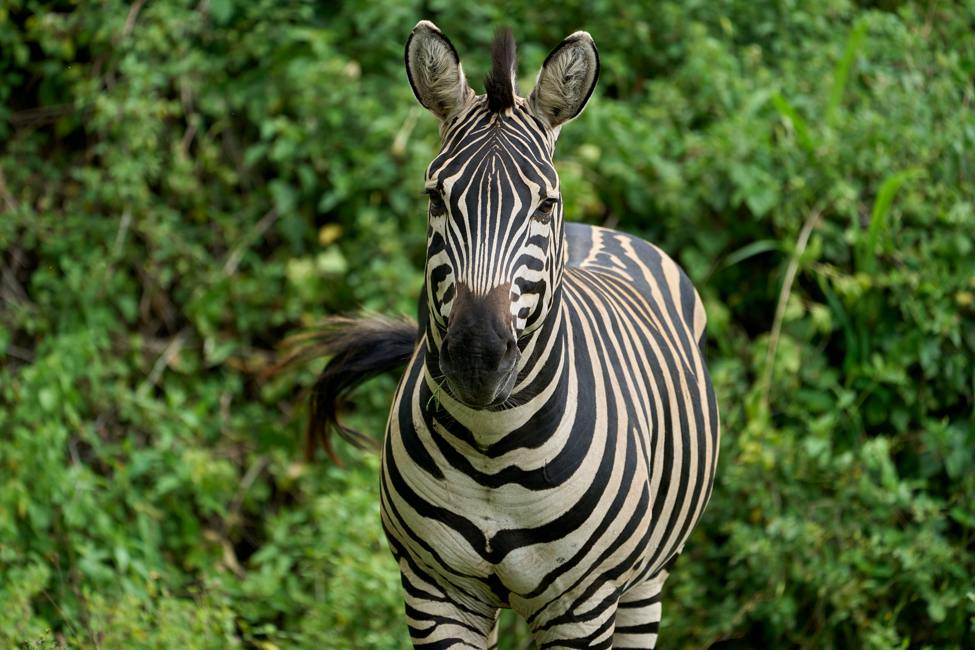
Zebras are among the many iconic African mammals you can see in Lake Manyara National Park. Photo by Dmitrii Zhodzishskii.
The Many Landscapes of Lake Manyara National Park
Lake Manyara National Park covers just 125 square miles, but encompasses many worlds.
Springs in the park’s northern end support a dense forest of giant fig and mahogany trees that shelter blue monkeys, baboons, bushbucks, common waterbucks, elephants, and silvery-cheeked hornbills.
South of the forest lies acacia woodland and open grassland. Here is an excellent place to see Cape buffalos, wildebeests, impalas, giraffes, zebras, lions, and gray-backed fiscal shrikes.
Lake Manyara is a central feature of the park, but the streams, hot springs, and pools around it also attract a diversity of wildlife, including hippos, birds like the mountain wagtail, Nile monitor lizards, and even mighty pythons.
And, of course, you can’t miss the cliffs. Dotted with magnificent baobab trees, these spectacular cliffs are a great place to birdwatch—the diversity is incredible! Look for Verreaux’s eagles; eight vulture species, including the critically endangered white-backed vulture and Rüppell’s griffon; nine species of swifts, such as the mottled spinetail and little swift; and ten species of swallows, including the wire-tailed swallow and red-rumped swallow.
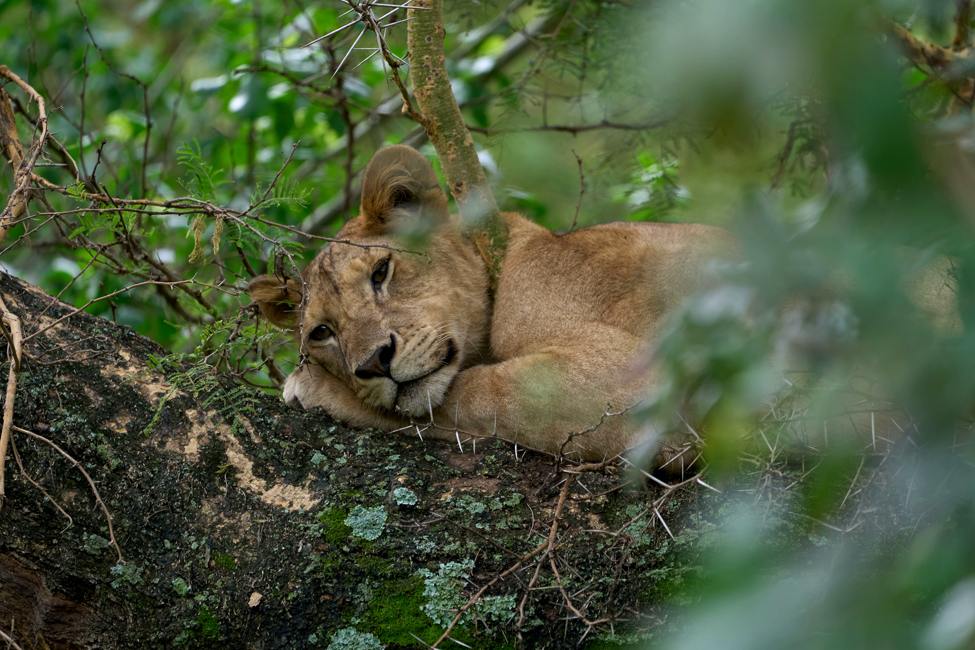
A lion rests in the treetops of Lake Manyara National Park. Photo by Dmitrii Zhodzishskii.
The Tree-Climbing Lions of Lake Manyara National Park
The lions of Lake Manyara National Park are different from the lions you’ll find in most other parts of Africa. While belonging to the same species, they have developed the unusual habit of climbing trees. While they also spend plenty of time on the ground, they can sometimes be found lounging in the treetops during the day. Experts are not certain why the lions here have developed this behavior, but it may be to escape biting insects, enjoy the cool breezes that flow through upper branches, or to get a better view of prey.
Tree-climbing lions have also been found in a handful of other East African parks, including Serengeti National Park in Tanzania and Lake Nakuru National Park in Kenya.
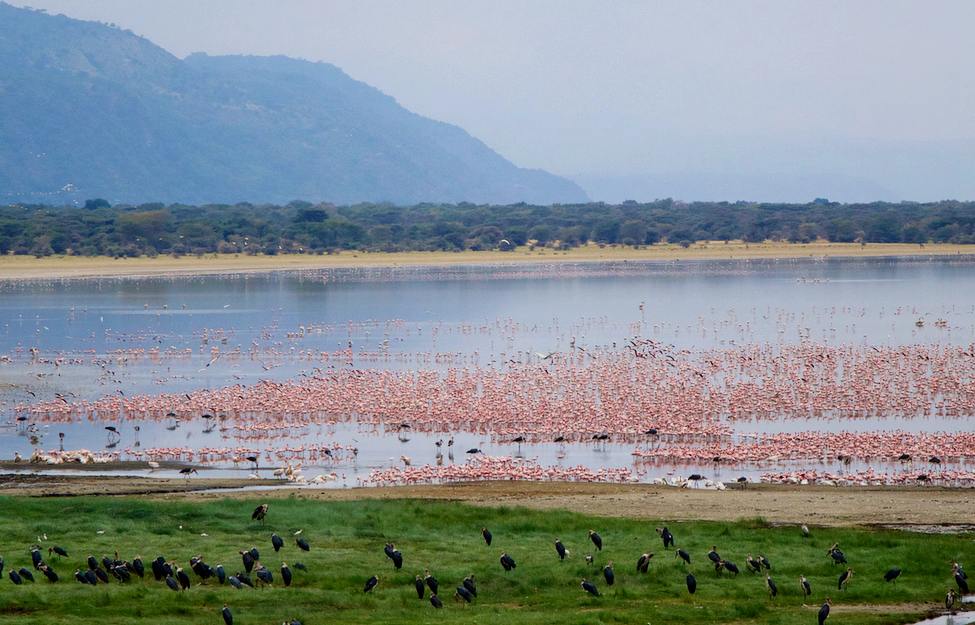
Flamingos, pelicans, marabou storks, and saddle-billed storks dot the shores of Lake Manyara. Photo by Ed Yourdon.
Fabulous Flamingos of Lake Manyara National Park
Another natural spectacle at Lake Manyara National Park happens every wet season, when the shores turn pink with thousands of flamingos—some estimates put the annual number of flamingos in the park at close to 2 million! The flamingos flock to the shallows of the lake to feast on algae, which is plentiful at this time of year. Besides flamingos, you are also likely to see pelicans, storks (including the saddle-billed stork and African openbill), cormorants, and ibises.
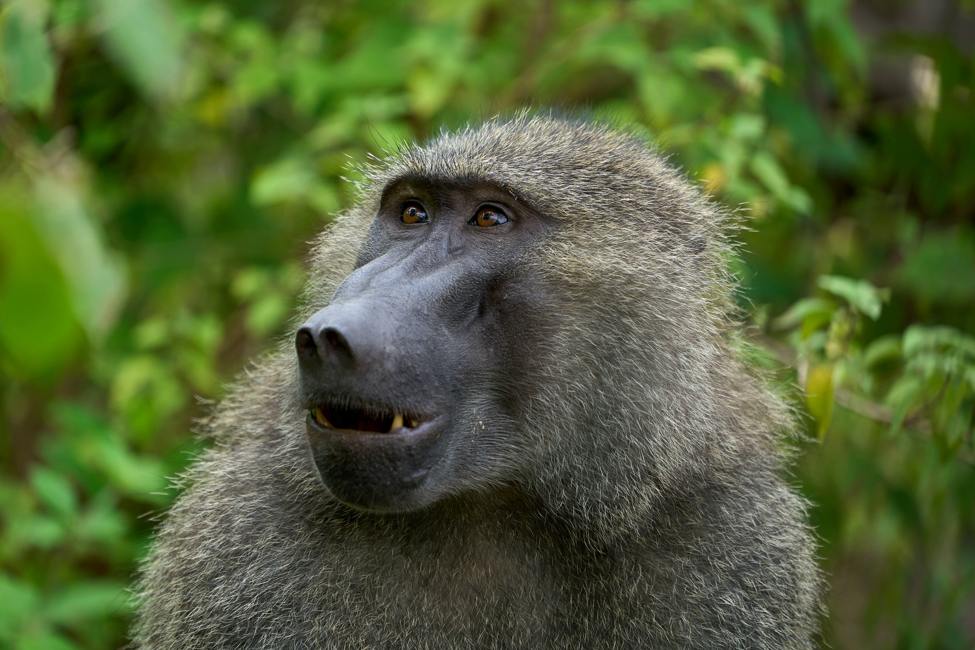
Baboons are a highlight of Lake Manyara National Park. Photo by Dmitrii Zhodzishskii.
.
The Baboon Capital of the World
Love monkeys? You’re in luck! Lake Manyara National Park is home to the world’s largest population of baboons. These highly social animals, often traveling in troops numbering in the dozens, are a joy to watch. Observe baby baboons riding on their mother’s backs or playing with their siblings while older troop members lounge about, groom each other, or even bicker.
You can also find blue monkeys and vervet monkeys in the park. These animals are not as big as baboons and live in smaller groups, but are just as charming to watch.
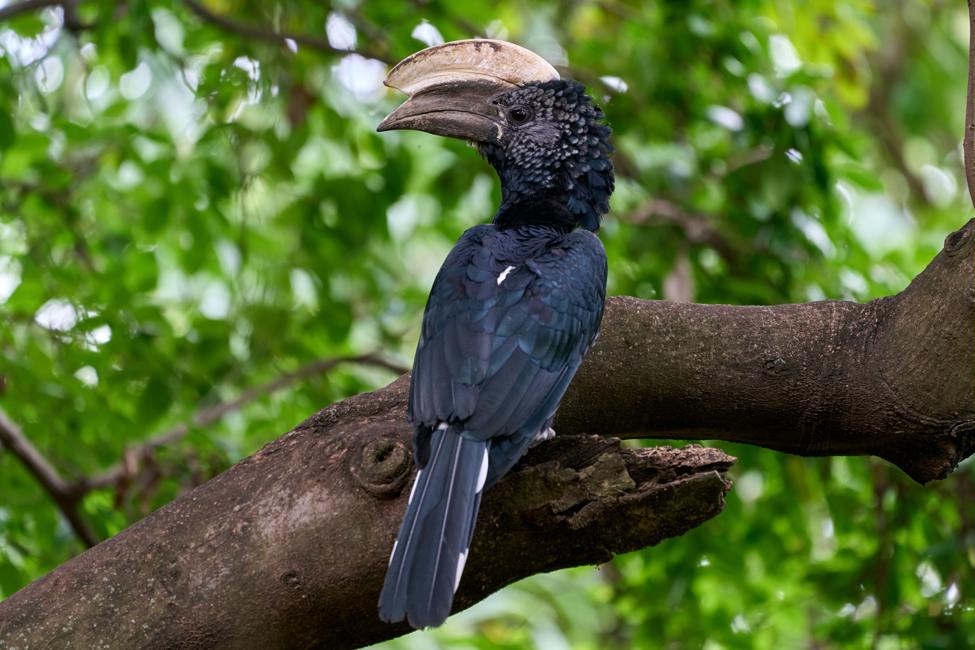
A silvery-cheeked hornbill perches on a tree in Lake Manyara National Park. Photo by Dmitrii Zhodzishskii.
.
Traveling to Lake Manyara
Lake Manyara National Park is about 75 miles from Arusha, Tanzania, which is served internationally by Kilimanjaro International Airport and domestically by Arusha airport. Most visitors arrive at the park by road. But to save time, you can also take a scheduled or charter flight to Lake Manyara Airstrip.
Once in Lake Manyara National Park, you can explore it through game drives and, depending on the season and water level, even canoeing!
To get the most out of Lake Manyara National Park, we recommend staying over for at least one night. A variety of accommodations are available around the park, including five-star lodges, luxury camps, and family-friendly options. Ujuzi African Travel can help you decide on the best transportation and lodging for your budget and safari goals.
Ready to explore your safari options? Contact Ujuzi today.
Sign up for the Ujuzi Newsletter!
From top travel tips to innovative safaris and conservation movement, get inspired to plan your next African safari!


